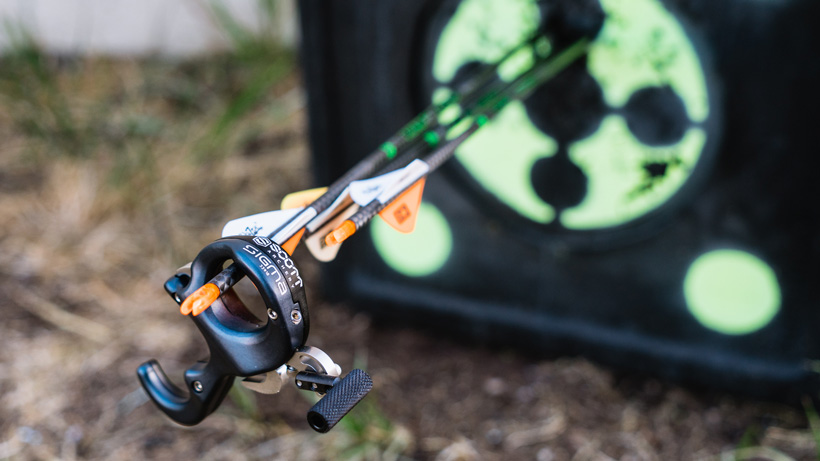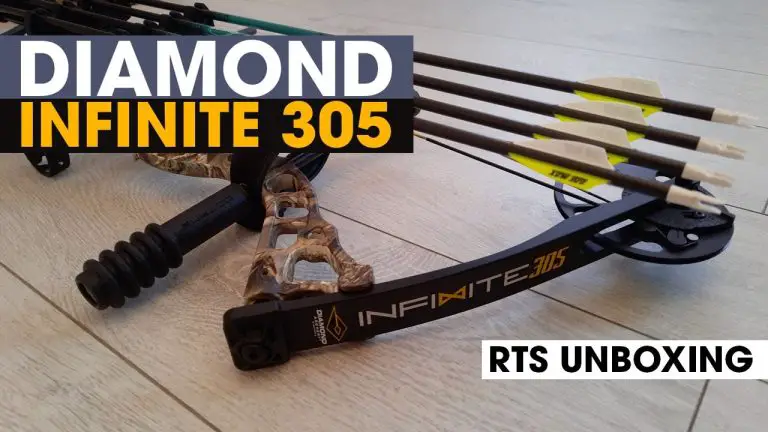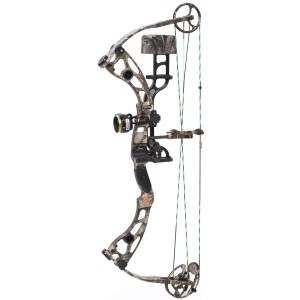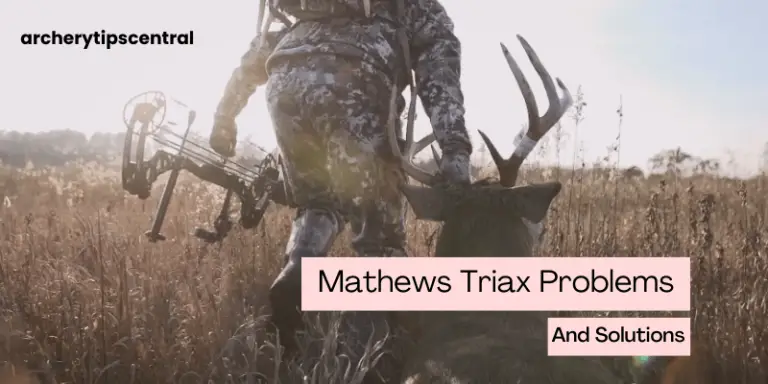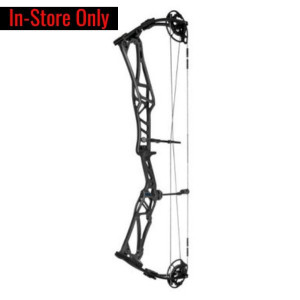Should You Practice With Broadheads
Are you an aspiring archer trying to improve your skills with a compound bow? If so, you might be wondering if practicing with broadheads is beneficial. Broadheads, the arrowheads used for hunting, have unique characteristics that differ from field points used for target practice. In this article, we will explore whether it is worth your time and effort to practice with broadheads, and the potential advantages it can bring to your archery skills. From the power and speed they offer to the importance of maintenance and safety, we will cover all the essential aspects to help you make an informed decision. So, let’s dive into the world of archery and find out if practicing with broadheads is right for you.

What Are Broadheads?
Broadheads are the specialized arrow tips that hunters use for big game hunting. Unlike field points, which are used for target practice, broadheads are designed to cause maximum damage and create deep wounds to ensure a clean kill. There are three main types of broadheads: fixed blade, mechanical, and replaceable blade. Each type has its own set of advantages and considerations that hunters should be aware of before choosing one.
Fixed Blade
Fixed blade broadheads consist of multiple sharp blades that are permanently attached to the arrow shaft. These broadheads are known for their reliability and simplicity. The fixed blades provide a sturdy cutting surface and are typically easier to sharpen compared to other types. They are also less prone to mechanical failures as they do not have any moving parts. However, the fixed blade design can be less aerodynamic, resulting in reduced accuracy and flight performance.
Mechanical
Mechanical broadheads, also known as expandable or deploying broadheads, have blades that remain closed during flight and open upon impact with the target. The blades are housed within a ferrule and are deployed by the energy released upon impact. Mechanical broadheads offer better aerodynamics and accuracy, resulting in improved flight performance compared to fixed blade broadheads. However, the mechanical components can be prone to malfunction, and improper deployment can lead to reduced effectiveness.
Replaceable Blade
Replaceable blade broadheads have blades that are detachable and can be replaced when they become dull or damaged. These broadheads offer the convenience of easily swapping out blades without the need for sharpening. They provide the option to maintain optimal cutting performance by using sharp blades for each hunt. However, the replaceable blades are generally less durable compared to fixed blades, and constant blade replacements may increase the overall cost.
Benefits of Practicing with Broadheads
Practicing with broadheads offers several benefits that can significantly improve your hunting skills and success rate. Here are some of the key advantages:
Realistic Flight and Accuracy
Broadheads have different flight characteristics compared to field points. Field points are designed for target practice and are generally more aerodynamic and forgiving in terms of accuracy. Practicing with broadheads allows you to simulate real hunting conditions and fine-tune your shooting technique to accommodate the unique flight characteristics of broadheads. This helps improve your accuracy and ensures that your shots will be on target when it matters most.
Fine-tuning Your Setup
Hunting with broadheads requires proper tuning of your bow and arrow setup. Different broadheads may have slight variations in flight performance, and it’s essential to find the right combination that works best for you. Practicing with broadheads allows you to experiment with different arrow spine, weight, and broadhead combinations to find the optimal setup for your specific bow. This fine-tuning process ensures that your equipment is optimized for the best possible performance in real hunting situations.
Building Confidence
Practicing with broadheads not only improves your physical skills but also helps build confidence in your abilities as a hunter. By regularly shooting with broadheads, you become more familiar with their performance and gain a deeper understanding of their capabilities. This confidence translates into improved decision-making and shot execution when you’re in the field. The more practice you have with broadheads, the more reliable and confident you’ll become as a hunter.
Testing Different Broadhead Types
By practicing with different types of broadheads, you can assess their individual strengths and weaknesses. It allows you to gain firsthand experience and determine which type of broadhead suits your hunting style and preferences. You can test the flight performance, cutting ability, and overall effectiveness of each broadhead type under different conditions. This knowledge enables you to make informed choices when selecting broadheads for your hunts, ensuring that you have the best possible tool for the job.

Considerations Before Practicing with Broadheads
Before you start practicing with broadheads, there are certain considerations and safety measures that you should keep in mind. Being aware of these factors ensures a safe and effective practice session. Consider the following:
Safety Measures
Safety should always be the top priority when practicing with broadheads. Ensure that you are familiar with the proper handling and use of broadheads before shooting them. Always follow the manufacturer’s instructions for installation and maintenance of broadheads. It’s also crucial to wear the appropriate protective gear, such as an armguard and finger tab or release aid, to prevent injuries while shooting.
Target Selection
Choose your target carefully when practicing with broadheads. Regular target practice can cause significant damage to traditional targets designed for field points. Look for specialized broadhead targets that are specifically designed to withstand the cutting force and penetration of broadheads. These targets are made of dense materials such as foam or rubber that can stop and hold the arrows securely.
Backyard vs. Range Practice
Consider the location where you will practice with broadheads. While practicing in your backyard may seem convenient, it’s important to ensure that you have a safe and suitable shooting environment. Backyard practice requires sufficient space, a secure backstop, and a clear shooting lane free from any obstacles or potential hazards. If you don’t have a suitable backyard setup, consider visiting an archery range that allows broadhead practice. Range practice provides a controlled and safe environment with dedicated facilities designed for broadhead shooting.
Broadhead Practice Techniques
To effectively practice with broadheads, it’s recommended to follow specific techniques and guidelines. These techniques will help you gradually transition from field points to broadheads and ensure that you are getting the most out of your practice sessions. Consider the following techniques:
Starting with Field Points
When transitioning to broadheads, a gradual approach is recommended. Begin by practicing with field points to warm up and refine your shooting skills. Field points allow you to focus on your form, aim, and consistency without the added variables of broadheads. This initial practice helps build a solid foundation that you can then apply to shooting with broadheads.
Gradual Transition to Broadheads
Once you feel comfortable and confident with field points, start incorporating broadheads into your practice routine. Begin by shooting a few arrows with broadheads in between your field point shots. This gradual transition allows you to gradually adjust to the different flight characteristics of broadheads while still maintaining the muscle memory and form developed with field points.
Target Distance and Environment
When practicing with broadheads, it’s important to consider the target distance and shooting environment. Start practicing at closer distances, such as 10 to 20 yards, and gradually increase the distance as you become more comfortable and consistent. This allows you to focus on arrow flight, impact accuracy, and target penetration. It’s also recommended to practice in various environmental conditions, such as windy or low-light conditions, to simulate real hunting scenarios and prepare for different challenges.
Tracking Arrow Performance
Observing and analyzing arrow performance is crucial when practicing with broadheads. Pay close attention to arrow flight, impact location, and penetration depth. Analyze the consistency of your shots and identify any patterns or inconsistencies. Tracking arrow performance helps you identify any form or equipment issues that may be affecting your shooting. It also allows you to make necessary adjustments to your setup and shooting technique for optimal performance with broadheads.

Equipment and Gear
To practice effectively with broadheads, it’s important to consider the necessary equipment and gear. Choosing the right broadheads, arrows, and targets can greatly enhance your practice sessions and overall hunting success. Take into account the following aspects:
Broadhead Selection
When selecting broadheads for practice, it’s recommended to choose the same type and model that you intend to use for hunting. This ensures consistency in flight performance, cutting ability, and accuracy. Additionally, consider the specific game you will be hunting and choose broadheads with appropriate cutting diameters and designs. The weight and construction material of broadheads can also vary, so select the ones that align with your preferences and requirements.
Field Point vs. Broadhead Arrows
Depending on your practice routine, you may need separate arrows for field points and broadheads. Field point arrows are typically used for target practice and are designed to be more durable and economical. Broadhead arrows, on the other hand, are specifically built to withstand the impact and cutting force of broadheads. They often have reinforced construction and shorter shaft lengths for optimal performance with broadheads.
Target Options
Investing in quality targets specifically designed for broadhead practice is essential. Look for targets that are capable of stopping and holding broadhead-tipped arrows securely. Foam or rubber targets are commonly used for broadhead practice due to their ability to withstand high-velocity impacts without damaging or dulling the broadheads. Specialized broadhead targets often have layered construction to handle repeated shots and provide easy arrow removal.
Benefits of Broadhead Practice for Hunters
Practicing with broadheads is not only beneficial for target accuracy but also essential for improving your hunting skills. Here are some reasons why broadhead practice should be an integral part of every hunter’s preparation:
Understanding Arrow Penetration
Broadhead practice allows you to gain a better understanding of arrow penetration and how different factors can affect it. By observing the performance of different broadheads and arrow setups, you can learn to assess penetration capabilities based on variables such as shot placement, arrow speed, and broadhead design. This knowledge is invaluable when making ethical shots on game animals and ensuring clean and humane kills.
Getting Accustomed to Hunting Conditions
Practicing with broadheads helps you get acclimated to real hunting conditions. The additional weight and different flight characteristics of broadheads can affect your shooting technique and arrow trajectory. By regularly practicing with broadheads, you become more comfortable and familiar with shooting under hunting conditions, including shooting from tree stands or in various weather conditions. This familiarity translates into improved performance and confidence during actual hunting situations.
Simulating Real Hunting Scenarios
Broadhead practice allows you to simulate real hunting scenarios and gain experience in making accurate shots in different situations. Practicing from elevated positions, such as shooting from a tree stand, can present unique challenges in terms of shot placement and angle compensation. By incorporating these scenarios into your practice routine, you develop the skills necessary to make precise shots in challenging hunting situations. This preparation increases your chances of success when it’s time to harvest game in the field.
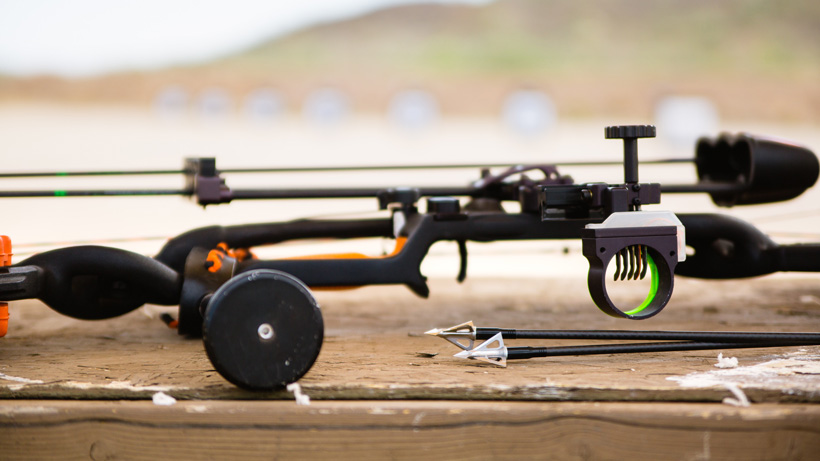
Common Mistakes to Avoid
When practicing with broadheads, it’s important to be aware of common mistakes that can negatively impact your shooting and overall experience. By avoiding these mistakes, you can maximize the effectiveness of your practice sessions and ensure a safe and enjoyable experience. Consider the following:
Neglecting Proper Form
Maintaining proper shooting form is crucial when shooting with broadheads. Neglecting proper form can lead to inconsistent shots, reduced accuracy, and increased risk of injury. Pay attention to your grip, anchor point, posture, and follow-through. Seek guidance from experienced archers or consider working with a qualified coach to help you develop and maintain proper shooting form.
Failing to Consider Arrow Trajectory
Broadheads have different flight characteristics compared to field points, and failing to consider arrow trajectory can lead to missed shots or ineffective hits. Understand how different broadhead designs, arrow weight, and shooting distances can affect the trajectory of your arrows. Practice at various distances and experiment with different setups to become familiar with the trajectory of your arrows when using broadheads.
Not Assessing Impact Damage on Broadheads
After each practice session, it’s important to inspect your broadheads for any signs of damage or dulling. Arrow impacts can cause minor deformations or edge dulling, which can affect their cutting performance. Regularly assess your broadheads for any signs of damage and ensure they are in optimal condition before using them for hunting. Replace any damaged or dull broadheads to ensure maximum effectiveness in the field.
Emphasizing Safety During Broadhead Practice
Safety should always be a top priority when practicing with broadheads. Taking proper safety precautions ensures a risk-free practice session and minimizes the chance of accidents or injuries. Consider the following safety measures:
Clearing the Shooting Range
Before shooting with broadheads, ensure that the shooting range is clear of any people, pets, or valuable objects. Broadheads have the potential to cause severe damage and injuries if they hit unintended targets. Establish a clear shooting lane and make sure there is a suitable backstop to safely capture and stop your arrows.
Using Proper Protective Gear
Protective gear is essential when practicing with broadheads. Wear an armguard to protect your forearm from potential impacts or contact with the bowstring. Additionally, consider using a finger tab or release aid to protect your fingers from the cutting blades of the broadheads. These safety precautions mitigate the risk of injuries and ensure that you can practice with confidence.
Being Mindful of Surroundings
Always be aware of your surroundings when shooting with broadheads. Ensure that there are no people, animals, or structures in the line of fire or within the potential trajectory of your arrows. This vigilance prevents accidental injuries or property damage. Additionally, be mindful of the arrow’s flight path and ensure that it does not pose a risk to anyone or anything beyond the target area.
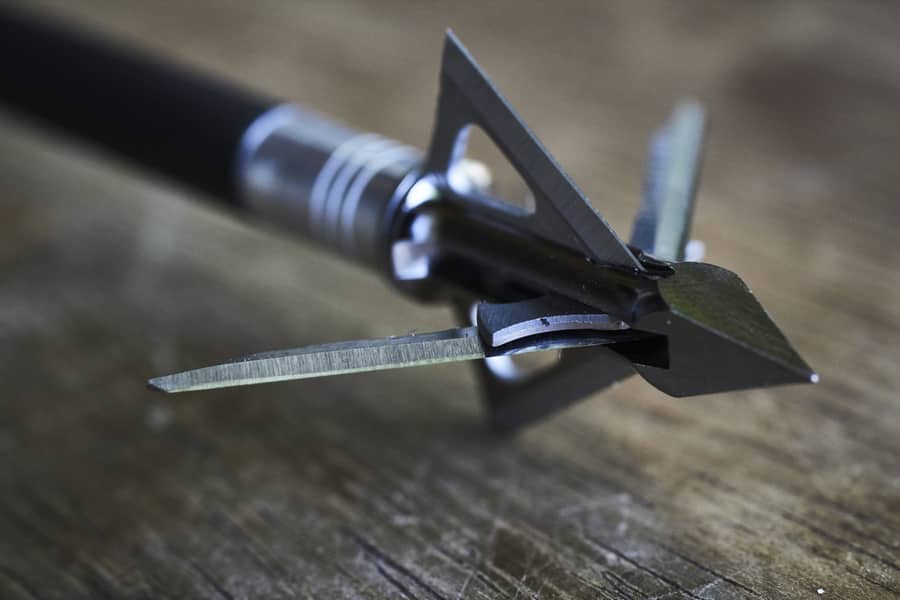
When Not to Practice with Broadheads
While practicing with broadheads offers numerous benefits, there are certain situations when it may not be suitable or recommended. Consider the following scenarios where it’s best to avoid practicing with broadheads:
Inexperienced Archers
If you are a beginner or inexperienced archer, it’s advisable to focus on developing your foundational skills with field points before transitioning to broadheads. Mastering the basics of shooting form, accuracy, and consistency will ensure a solid foundation for practicing with broadheads in the future. Once you have gained sufficient proficiency with field points, you can then gradually incorporate broadheads into your practice routine.
Damaged Broadheads or Arrows
Practicing with damaged or dull broadheads is not recommended. Damaged broadheads can lead to unpredictable flight characteristics, reduced cutting performance, and increased risk of equipment failure. Similarly, shooting with damaged or weakened arrows compromises their integrity and can result in dangerous situations. Always inspect your broadheads and arrows before each practice session and replace any damaged or worn-out components.
Limited Space or Unsuitable Practice Areas
If you have limited space or lack a suitable practice area, it may not be safe or feasible to practice with broadheads. Shooting broadheads requires a safe shooting range with sufficient space, a secure backstop, and a clear shooting lane. Inadequate space or unsuitable practice areas can pose risks to people or property if arrows miss the target or pass through the backstop. In such cases, consider visiting an archery range that allows broadhead practice to ensure a safe and controlled shooting environment.
Conclusion
Practicing with broadheads is an essential part of every hunter’s preparation. It offers the opportunity to develop and refine your shooting skills, fine-tune your equipment setup, and gain confidence in your abilities as a hunter. By incorporating broadhead practice into your routine, you simulate real hunting scenarios, understand arrow penetration, and prepare for different challenges you may encounter in the field. Remember to prioritize safety, follow proper techniques, and make informed choices when selecting broadheads and other equipment. With dedication and practice, you’ll be well-prepared to take on the challenges of hunting with broadheads and increase your chances of a successful harvest.

